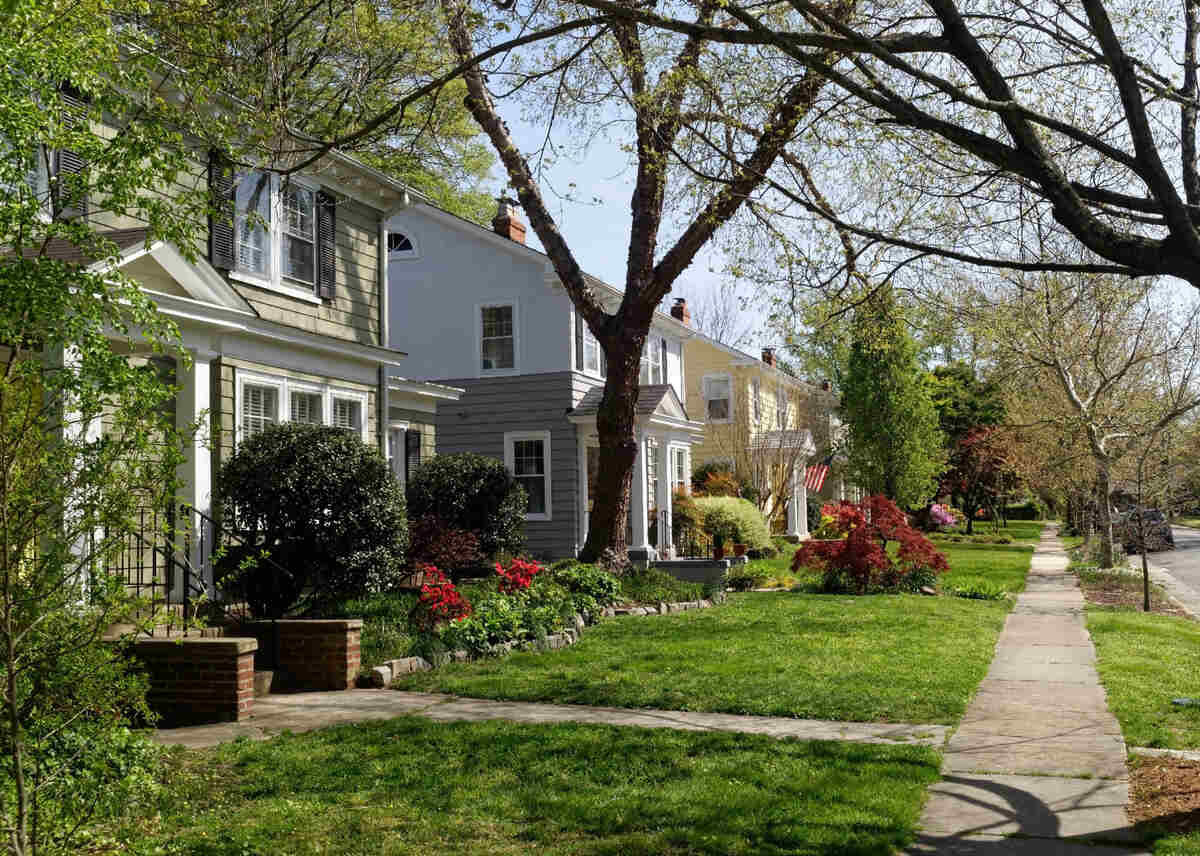
What is the best grass seed for Virginia lawns? That depends on where you live as we can choose from warm-season grasses like Bermudagrass and Zoysia and cool-season grasses like Kentucky bluegrass and fine fescue.
In this article, we’ll help you choose the best grass seed for your lawn based on your region of the state — Tidewater Virginia, Central Virginia, Northern Virginia, and Western Virginia.
Most of Virginia is in the transition zone (as you can see on the map below), a band of the U.S. where cool-season and warm-season grasses are options.
The southern Tidewater region is the exception. It’s in the area where warm-season grasses are the norm.
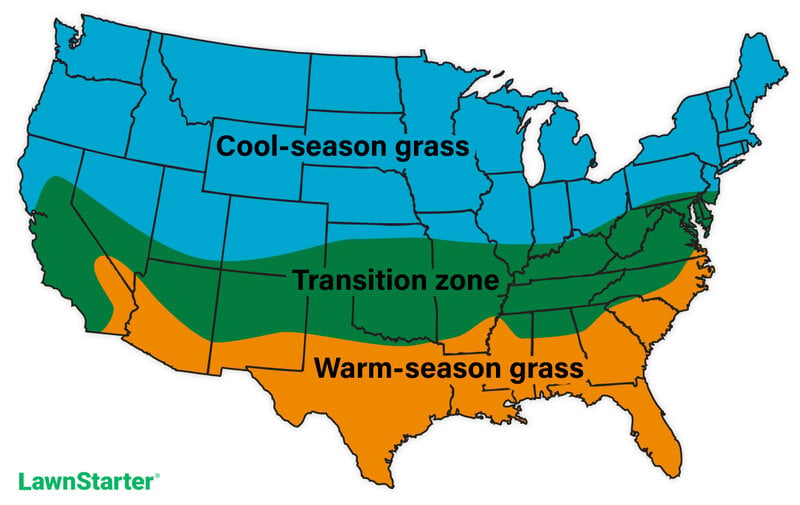
Let’s take a look at the warm-season grasses and cool-season grasses that are common across much of our state:
Warm-Season Grasses
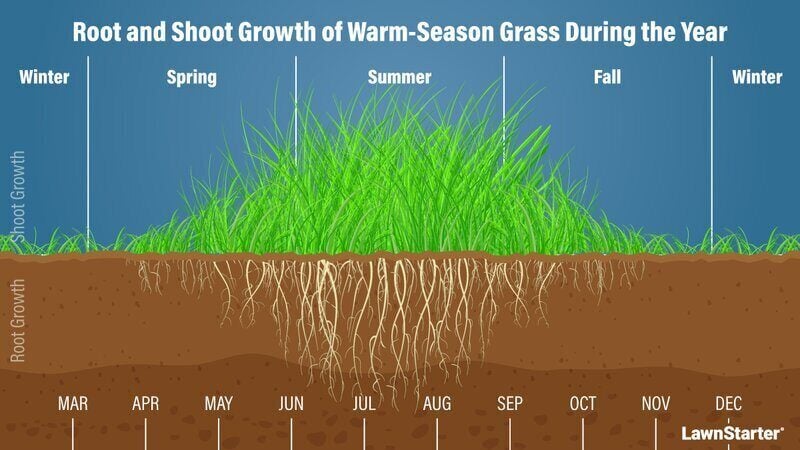
What are warm-season grasses?
Heat and drought-tolerant, warm-season grasses prefer temperatures of 80-95 degrees. They lose their green color for 3-5 months in the winter, depending on their location. Warm-season grasses are typically not sensitive to extreme summer temperatures and use less water than cool-season grasses. Lawn pests are rarely a problem.
Warm-season grasses work best in the Tidewater and Central (or Piedmont) regions of Virginia.
Bermudagrass
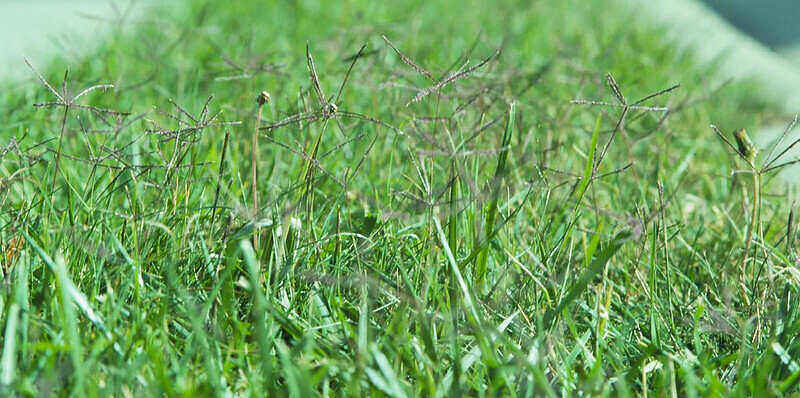
Photo Credit: Matt Levin / Flickr / CC BY-SA 2.0
Bermudagrass is high maintenance, but it has a high salt tolerance, making it a good choice for the Tidewater region and areas buffeted by hurricane-force winds.
In the winter and in severe drought, Bermudagrass enters dormancy, but in warmer temperatures, it turns light to dark green. Also called couchgrass, devilgrass, wiregrass, or dogtooth grass, Bermudagrass is considered a weed by some.
Grass Seed Options:
– Scotts Turf Builder Bermudagrass (10-lb. bag)
– Hancock Seed Co. Bermudagrass (50-lb. bag)
To help maintain a year-round green lawn, Bermudagrass can be overseeded in the fall with ryegrass.
Centipedegrass
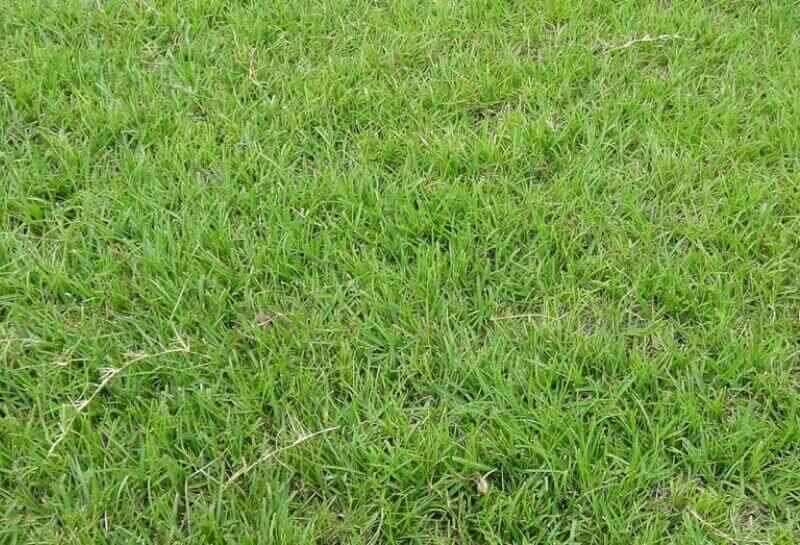
Photo credit: Michael Rivera / Wikimedia Commons / CC BY-SA 4.0
Centipedegrass, which has an apple-green color, is often referred to as “lazy man’s grass” due to its low maintenance requirements. Centipedegrass, however, does not do well in harsh winter conditions.
Grass Seed Options:
– Gulf Kist Coated Centipedegrass Seeds (1 lb.)
– Scotts EZ Seed Patch and Repair Centipedegrass (3.75 lbs.)
– TifBlair Centipedegrass (5-lb. bag)
St. Augustinegrass
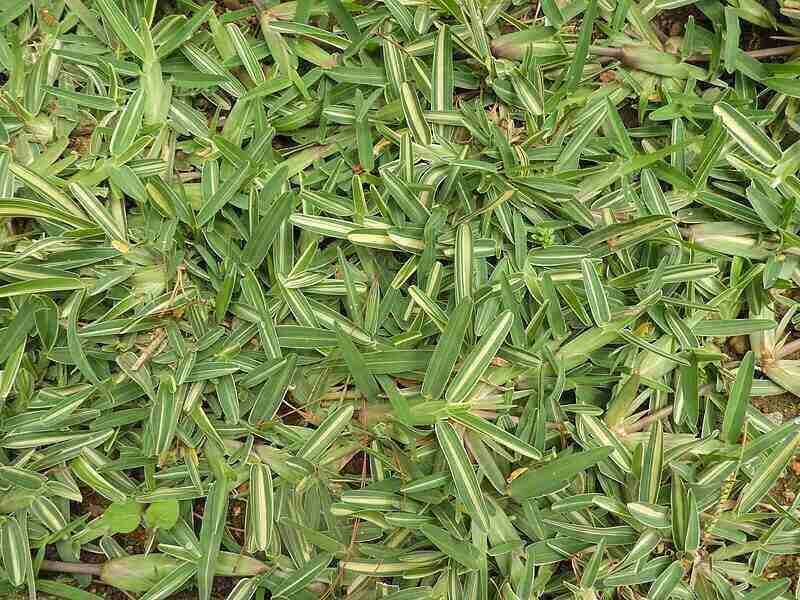
Photo Credit: Yercaud-elango / Wikimedia Commons / CC BY-SA 4.0
St. Augustinegrass, with its medium- dark-green color, grows fast and is drought-resistant. Its thick, grassy carpet makes it a favorite in Virginia and across much of the southern U.S.
St. Augustinegrass needs frequent mowing due to fast growth rate, develops thatch easily, and needs regular fertilization.
A St. Augustinegrass lawn is almost always established with plugs or sod, rather than seeds.
Grass Plug Options:
– Seed Ranch St Augustine Seville Grass Plugs (2 Trays)
– Seed Ranch St Augustine Floratam Grass Plugs (2 Trays)
Zoysiagrass
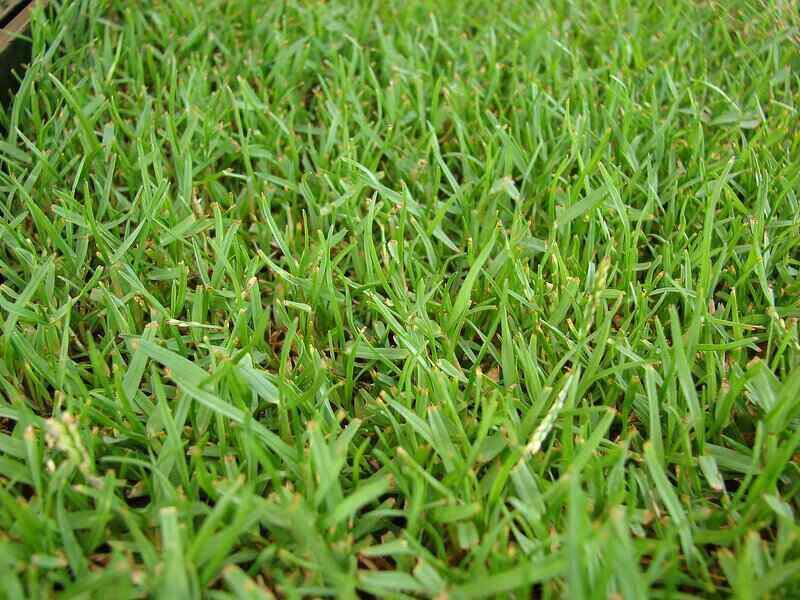
Photo Credit: Forest & Kim Starr / Wikimedia Commons / CC BY 3.0 US
Zoysiagrass produces a very high-quality lawn if well maintained, but it turns the color of straw after the first hard frost and will green up in spring.
Zoysiagrass is popular in coastal areas, including Virginia’s Tidewater, but it can sometimes survive winters in other parts of the state. It is the warm-season turfgrass with the most cold tolerance. Meyer and Zeon are the current favorite cultivars.
Zoysia is more expensive than the other warm-season grasses. Zoysiagrass is drought-tolerant, so it doesn’t need to be mowed as frequently as other warm-season grasses due to its slow rate of growth.
Grass Plug and Seed Options:
– Zoysia Plugs (50 Large Grass Plugs)
– Zoysia Plugs (50 Full & Lush Grass Plugs)
– Zoysia Plugs (100 Plugs)
– Zenith Zoysia Grass Seeds (1/8 lb. of seeds)
Seashore Paspalum
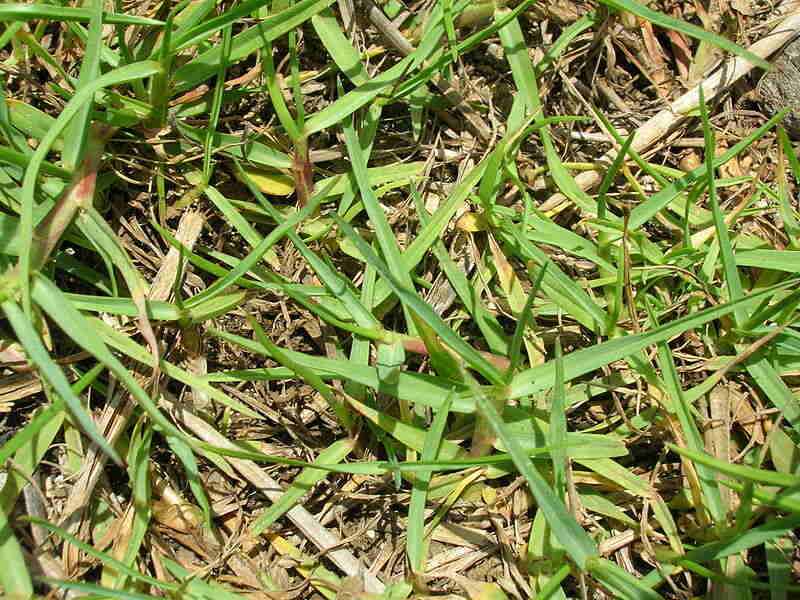
Photo Credit: Forest & Kim Starr / Wikimedia Commons / CC BY 3.0
Seashore paspalum’s high salt tolerance makes it a promising turfgrass for areas in the Tidewater. This light- to medium-green grass needs non-saline water for establishment, but, once established, it can be irrigated with brackish water.
Seashore paspalum, also called sand knotgrass or saltwater couch grass, does not tolerate drought as well as Bermudagrass.
Be careful with the herbicides, though; seashore paspalum grass has demonstrated sensitivity to many of them.
Also called sand knotgrass or saltwater couch grass, seashore paspalum has been used for public grounds, parks, golf courses, and athletic fields.
Grass Seed and Sod Options:
– Seed Ranch SeaShore Paspalum Coated Grass Seed – 1 lb.
– Seed World SeaShore Paspalum Grass Seeds (various amounts)
– Other places to purchase seashore paspalum sod
Cool-Season Grasses
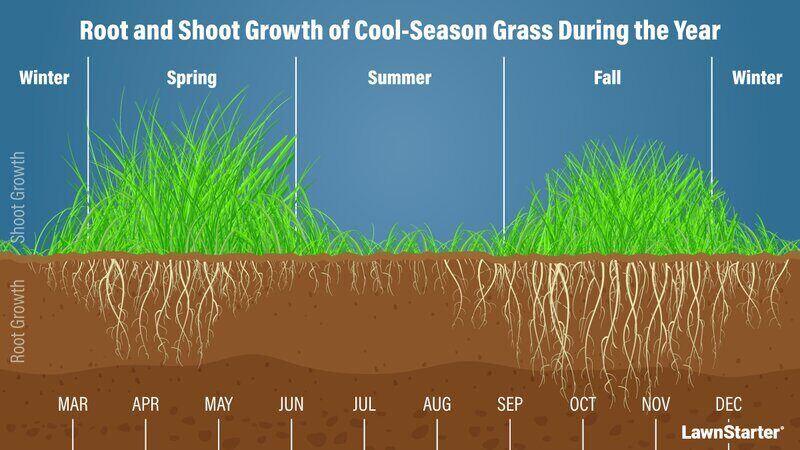
Cool-season grasses start growing in the spring, decline during the summer, and then become revitalized in fall, so they’re best planted during autumn. Cool-season grasses like temperatures of 60-75 degrees.
These cool-season grasses are best grown in southwest Virginia, the Shenandoah Valley, and northern Virginia:
Fine Fescue
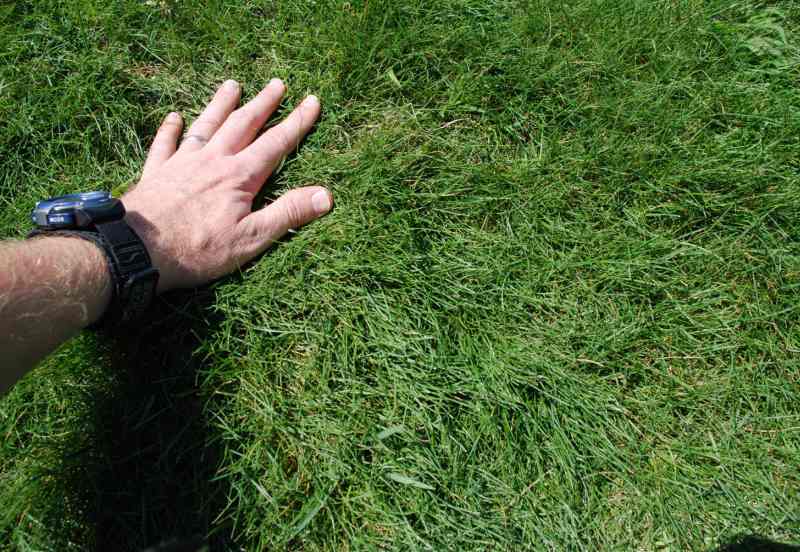
Aaron J. Patton, Ph.D. / Turfgrass Extension Specialist at Purdue University
Fine fescue is the best grass for full and partial sun in the Valley and Ridge areas of Virginia and shade-only conditions in northern Piedmont.
Virginia homeowners use only creeping red, hard, and chewings fescues in their lawns. These grasses result in low-maintenance yards but have poor traffic tolerance. They can be mixed with Kentucky bluegrass in sun/shade seed blends.
Fine fescue is considered low maintenance because it grows slowly, has good drought tolerance, requires less fertilizer, and doesn’t need a lot of pesticide applications.
Grass Seed Options:
– Outsidepride Legacy Fine Fescue Grass Seed (5 lbs.)
– Eretz Creeping Red Fine Fescue Seed (choose your size)
– Outsidepride Creeping Red Fine Fescue Grass Seed (25 lbs.)
– Outsidepride Hard Fine Fescue Grass Seed (10 lbs.)
Kentucky Bluegrass

Photo Credit: Shutterstock
Kentucky bluegrass has exceptional tolerance to cold but goes dormant in the late summer and dry periods. This full-sun turfgrass does poorly when it receives less than 6 hours of full sun per day.
A dark-green color, Kentucky bluegrass is well adapted to the Shenandoah Valley and Blue Ridge regions, as well as northern Piedmont. Why? Kentucky bluegrass grows well in regions where the average summer temperature stays below 75 degrees.
Usually mixed with other cool-season grasses, Kentucky bluegrass is often confused with tall fescue and/or perennial ryegrass.
Worth noting: Kentucky bluegrass is prone to several lawn diseases, such as dollar spot, leaf spot, necrotic ring spot, summer patch, and stripe smut.
Grass Seed Options:
– Jonathan Green (11970) Blue Panther Kentucky Bluegrass Grass Seed (3 lbs.)
– SeedRanch Midnight Kentucky Bluegrass Seed (5 lbs.)
Perennial Ryegrass
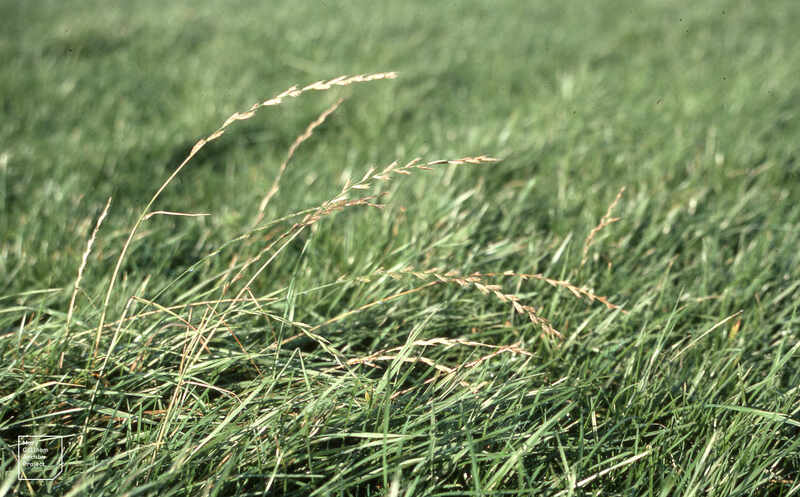
Photo Credit: Dr Mary Gillham Archive Project / Flickr / CC BY 2.0
Perennial ryegrass creates a dense lawn and doesn’t like heat and drought. Once out of favor because of its propensity for disease, perennial ryegrass’s newer, more disease-resistant cultivars have become popular again in Virginia.
Perennial ryegrass is dark green and quick to germinate.
Ryegrass can be planted by itself above 2,000 feet in the Valley and Ridge and used in seed mixes with Kentucky bluegrass and fine fescue in the rest of the mountainous regions and northern Piedmont. Perennial ryegrass is grown as a winter annual in the southern Piedmont and Tidewater and is most often used for winter overseeding of warm-season grasses.
Grass Seed Options:
– Outsidepride Perennial Ryegrass Seed (5 lbs.)
– Eretz ProTurf Perennial Ryegrass Fine Lawn Seed (choose your size)
Turf-Type Tall Fescue

Aaron J. Patton, Ph.D. / Turfgrass Extension Specialist at Purdue University
According to Virginia Tech, tall fescue is “by far the most prevalent lawn grass in terms of acreage in Virginia because it is simply a very hardy, very durable grass.”
Tall fescue cultivars have the deepest root systems of any cool-season grass, which helps this grass to resist drought conditions. Homeowners need to overseed tall fescue every few years to repair bare spots and thinning.
Tall fescue grass has adapted to the Valley, Ridge, and Piedmont regions, although it has only marginally adapted to the Tidewater.
Worth Noting: The cultivar for lawns used to be Kentucky-31; however, newer, “turf-type” cultivars of tall fescue have a finer texture, provide a darker green color, and tolerate shaded areas better.
Grass Seed Options:
– Triple-Play Tall Fescue Grass Seed Blend (5000 sq ft)
– Eretz Kentucky 31 K31 Tall Fescue Grass Seed (choose your size)
– Pennington The Rebels Tall Fescue Grass Seed Mix (7 lb.)
Best Grass Seed for Tidewater Virginia
Several warm-season grasses are appropriate for the Tidewater region of Virginia:
The best grasses for this area consist of slow-growing centipedegrass and fast-growing St. Augustinegrass. This is especially true in the southeast corner, which includes Virginia Beach and its surrounding area.
Other popular grass types in the Tidewater region? Bermudagrass, Zoysiagrass, and seashore paspalum can be grown among the large lands along the Atlantic and Chesapeake Bay.
Best Grass Seed for Central Virginia
Central Virginia consists of the Piedmont region of the state and its many trails, especially in the National Battlefield Parks. This area has cold winters and hot summers that make deciding between cool-and warm-season turf grasses a challenge.
The Piedmont Master Gardeners consider Kentucky bluegrass and tall fescue the best cool-season grasses and Zoysiagrass and Bermudagrass the best warm-season turfgrasses for Central Virginia.
Best Grass Seed for Northern Virginia
Cool-season grasses are best for Northern Virginia, with its proximity to Washington, D.C. Most lawns in this area have a seed mix of Kentucky bluegrass, perennial ryegrass, and/or fine fescues.
Worth Noting: Tall fescue is sometimes sodded in a 90/10 mix (by weight) with Kentucky bluegrass. It is not often mixed with other grasses due to a lack of uniformity in appearance.
Best Grass Seed for Western Virginia
Western Virginia includes the Valley and Ridge region and the Appalachian Plateau in the far west. It is, in a word, mountainous, so it shouldn’t be any surprise that the cool-season grasses grow best here. But which grasses are best for Roanoke and the surrounding area?
Virginia Tech suggests a mix of cool-season turfgrasses. They say to select mixtures with Kentucky bluegrass and/or perennial ryegrass for the sunny areas of your yard and the fine-leaf fescues for the shady ones. Turf-type tall fescue is another option for the western region of Virginia.
How to Choose the Best Grass Type for Your Virginia Lawn
How to choose the best grass type for your Virginia lawn depends on your lawn, as well as climate and environmental conditions. Do you have a lot of shade? A shade-tolerant grass is your best bet then. And how much time do you have to care for your lawn — chances are you might prefer a low-maintence grass.
Let’s go over your grass options:
Shade Tolerance
Low shade tolerance: Bermudagrass, seashore paspalum, Kentucky bluegrass, perennial ryegrass
Moderate shade tolerance: Centipedegrass, St. Augustinegrass, Zoysiagrass, tall fescue
High shade tolerance: Fine fescue
Drought Tolerance
There are places in Virginia that become very hot in summer, and for these places, where the weather can become scorching, you’ll want a drought-hardy grass.
Low drought tolerance: Perennial ryegrass
Moderate drought tolerance: St. Augustinegrass, Zoysiagrass, seashore paspalum, Kentucky bluegrass, tall fescue, centipedegrass
High drought tolerance: Bermudagrass, fine fescue
Foot Traffic
If you, your kids, or your pets have a history of playing outdoors, you’ll need a grass with high traffic tolerance.
Low traffic tolerance: Centipedegrass, St. Augustinegrass, fine fescue
Moderate traffic tolerance: Seashore paspalum, Kentucky bluegrass, tall fescue
High traffic tolerance: Bermudagrass, Zoysiagrass, perennial ryegrass
Lawn Maintenance Needs
Low maintenance grasses: Centipedegrass, fine fescue
Moderate maintenance grasses: Zoysiagrass, seashore paspalum, perennial ryegrass, tall fescue
High maintenance grasses: Bermudagrass, St. Augustinegrass, Kentucky bluegrass
When to Hire a LawnStarter Pro
If this all sounds like too much work, because after you’ve chosen the best grass type for your Virginia lawn you’ll need to mow the grass, edge, and trim your yard. That will take an hour — or hours — every week or two. Don’t you have better things to do than sweating doing yard work?
You can DIY your lawn care or call in a Virginia lawn care professional near you. LawnStarter has trusted lawn care pros in Roanoke, Virginia Beach, Chesapeake, Norfolk, Arlington, Richmond, Newport News, Alexandria, and all across the state.
Sources
Main Image Credit: Shutterstock
LawnStarter participates in the Amazon Services LLC Associates Program, an affiliate advertising program. LawnStarter may earn revenue from products promoted in this article.